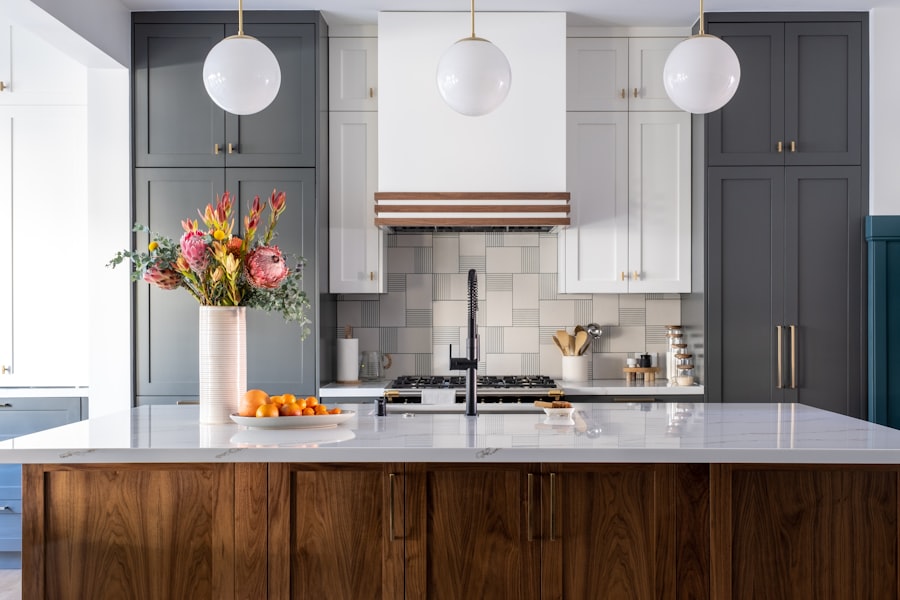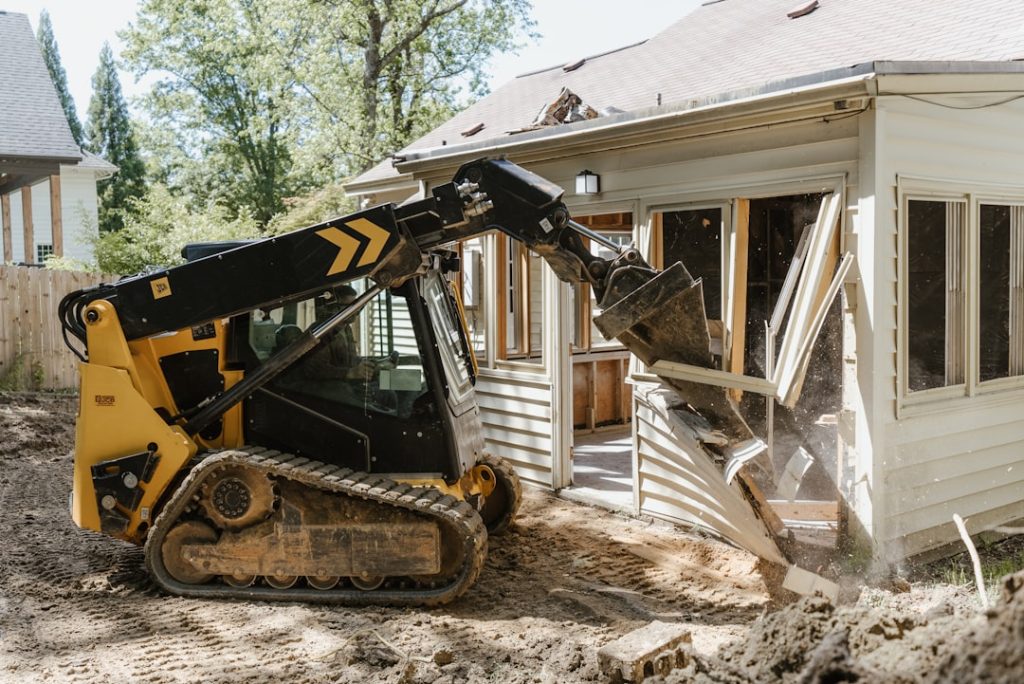Embarking on a home remodel is an exciting yet daunting endeavor that requires careful planning and foresight. The first step in this journey is to define your goals clearly. Are you looking to enhance the aesthetic appeal of your home, improve functionality, or increase its market value?
Each of these objectives will influence the direction of your project. For instance, if your primary goal is to create a more open living space, you might consider removing walls or expanding rooms. Conversely, if you aim to modernize your kitchen, you may focus on upgrading appliances and fixtures while maintaining the existing layout.
Once you have established your goals, it is essential to conduct thorough research. This includes gathering inspiration from various sources such as home improvement magazines, online platforms like Pinterest, and even visiting model homes or open houses. Creating a mood board can help visualize your ideas and serve as a reference point throughout the remodeling process.
Additionally, it’s wise to assess the current state of your home. Identify areas that require repair or improvement and consider how these changes align with your overall vision. This comprehensive approach will lay a solid foundation for a successful remodel.
Key Takeaways
- Plan your remodel carefully to ensure that it meets your needs and desires.
- Set a realistic budget for your remodel and stick to it to avoid overspending.
- Choose high-quality materials that are durable and fit your design aesthetic.
- Hire experienced and reputable contractors to ensure a successful remodel.
- Maximize space and functionality in your home by carefully planning the layout and design.
Budgeting for Your Remodel
Budgeting is arguably one of the most critical aspects of any remodeling project. A well-structured budget not only helps you manage your finances but also ensures that you can achieve your desired outcomes without overspending. Start by determining how much you can realistically allocate to the remodel.
This figure should encompass all potential costs, including materials, labor, permits, and unexpected expenses that may arise during the project. A common rule of thumb is to set aside an additional 10-20% of your total budget for contingencies. Once you have a clear budget in mind, prioritize your spending based on your goals.
For example, if kitchen upgrades are at the top of your list, allocate a larger portion of your budget to that area while being more conservative with other spaces. It’s also beneficial to obtain multiple quotes from contractors and suppliers to ensure you’re getting the best value for your money. Keep in mind that while it may be tempting to cut corners to save costs, investing in quality materials and skilled labor can lead to long-term savings by reducing the need for repairs or replacements down the line.
Choosing the Right Materials

Selecting the right materials for your remodel is crucial not only for aesthetic appeal but also for durability and functionality. The choices you make can significantly impact the overall look and feel of your space, as well as its longevity. Begin by considering the style you wish to achieve—whether it’s modern, rustic, or traditional—and choose materials that complement that vision.
For instance, if you’re aiming for a contemporary kitchen, sleek quartz countertops and stainless steel appliances may be ideal choices. In addition to aesthetics, it’s essential to evaluate the practicality of the materials you select. For high-traffic areas like kitchens and bathrooms, opt for materials that are resistant to wear and tear, moisture, and stains.
Porcelain tiles or natural stone can be excellent options for flooring due to their durability and ease of maintenance. Furthermore, consider sustainability when choosing materials; eco-friendly options such as reclaimed wood or bamboo not only reduce environmental impact but can also add unique character to your home.
Hiring the Right Contractors
| Metrics | Data |
|---|---|
| Number of contractors hired | 25 |
| Percentage of contractors with relevant experience | 80% |
| Percentage of projects completed on time | 90% |
| Percentage of projects within budget | 85% |
The success of your remodel heavily relies on the expertise of the contractors you hire. Finding skilled professionals who align with your vision and budget is paramount. Start by seeking recommendations from friends, family, or neighbors who have recently completed similar projects.
Online platforms like Angie’s List or Houzz can also provide valuable insights into local contractors’ reputations and past work. Once you have a shortlist of potential contractors, conduct thorough interviews to gauge their experience and compatibility with your project. Ask about their previous work, request references, and verify their licenses and insurance coverage.
It’s also wise to discuss timelines and payment structures upfront to avoid misunderstandings later on. A good contractor will not only bring technical skills but will also communicate effectively and be responsive to your needs throughout the remodeling process.
Maximizing Space and Functionality
In many remodeling projects, especially in urban settings where space is often limited, maximizing space and functionality becomes a top priority. One effective strategy is to consider an open floor plan that merges living areas, creating a sense of spaciousness while enhancing flow between rooms. This approach can be particularly beneficial in kitchens and living rooms where families gather frequently.
In addition to structural changes, incorporating multifunctional furniture can significantly enhance usability in smaller spaces. For example, a dining table that doubles as a workspace or a sofa bed for guests can provide flexibility without sacrificing style. Built-in storage solutions such as shelves or cabinets can also help declutter spaces while maintaining an organized appearance.
By thoughtfully considering how each area will be used, you can create a home that not only looks great but also meets the practical needs of your lifestyle.
Adding Value to Your Home

A well-executed remodel can substantially increase the value of your home, making it an attractive investment for the future. When planning renovations with resale value in mind, focus on areas that prospective buyers typically prioritize. Kitchens and bathrooms are often at the top of this list; modernizing these spaces with updated fixtures, energy-efficient appliances, and stylish finishes can yield significant returns.
Additionally, curb appeal plays a crucial role in attracting potential buyers. Simple enhancements such as fresh paint, landscaping improvements, or new siding can make a lasting impression from the moment someone approaches your home. It’s also worth considering energy-efficient upgrades like new windows or insulation; these not only appeal to environmentally conscious buyers but can also lower utility costs for future homeowners.
Incorporating Energy-Efficient Features
In today’s environmentally conscious market, incorporating energy-efficient features into your remodel is not just beneficial for the planet; it can also lead to substantial savings on energy bills over time. Start by evaluating your home’s current energy consumption and identifying areas where improvements can be made. Upgrading insulation in walls and attics can significantly reduce heating and cooling costs while enhancing comfort.
When selecting appliances and fixtures, look for those with Energy Star ratings or similar certifications that indicate superior energy efficiency. For instance, installing low-flow faucets and showerheads can reduce water usage without sacrificing performance. Additionally, consider integrating smart home technology that allows for better control over heating, cooling, and lighting systems; these innovations not only enhance convenience but also contribute to long-term energy savings.
Adding Personal Touches and Style
While functionality and efficiency are paramount in any remodel, personal touches are what truly transform a house into a home. Infusing your unique style into the design can create spaces that reflect your personality and lifestyle preferences. Start by selecting a cohesive color palette that resonates with you; this will serve as a foundation for all design choices moving forward.
Incorporating artwork, family photos, or heirlooms into your decor can add warmth and character to your space. Additionally, consider custom elements such as built-in shelving or unique light fixtures that showcase your taste while enhancing functionality. Textiles like curtains, rugs, and cushions can also play a significant role in establishing ambiance; choose fabrics that complement your overall design while providing comfort and style.
By thoughtfully curating these elements, you can create an inviting atmosphere that feels distinctly yours amidst the structural changes of your remodel.



